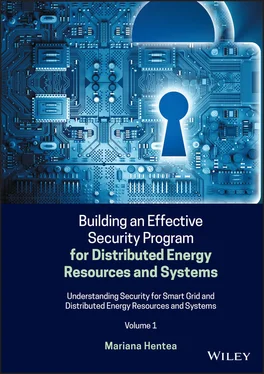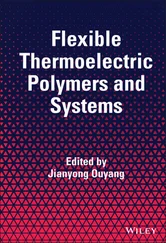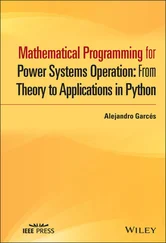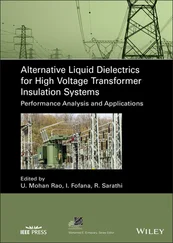2 Chapter 2 Figure 2.1 Technology road map. Figure 2.2 A smart meter application in two scenarios. Figure 2.3 Infographic of Internet of Everything. Figure 2.4 ABI Research Market Forecast for Internet of Everything. Figure 2.5 Internet of Everything connected in a large distributed network.... Figure 2.6 A perspective of the Wi‐Fi Internet of Everything – core attribut... Figure 2.7 Simple cyber‐physical representation. Figure 2.8 NIST CPS conceptual model. Figure 2.9 Components of CPS for smart transportation. Figure 2.10 Cyber–physical system – simple structure. Figure 2.11 Security concepts and relationships. Figure 2.12 Information security and cybersecurity relationship. Figure 2.13 Forces shaping cybersecurity. Figure 2.14 Interdependencies across the economy.
3 Chapter 3 Figure 3.1 Components of information security. Figure 3.2 A view of security measure relationships with other concepts. Figure 3.3 Data transformation. Figure 3.4 DIKW pyramid: data, information, knowledge, and wisdom. Figure 3.5 The pyramid of knowledge. Figure 3.6 Dimensions of dependability. Figure 3.7 Information life cycle.Figure 3.8 CIA information security model.Figure 3.9 McCumber cube.Figure 3.10 NSTISSC model.Figure 3.11 The information assurance model.Figure 3.12 IA model with time dimension.Figure 3.13 RMIAS model.
4 Chapter 4Figure 4.1 The information system infrastructure.Figure 4.2 Examples of cloud services.Figure 4.3 Cloud provider major activities.Public Domain.Figure 4.4 The conceptual cloud computing reference model.Public Domain....Figure 4.5 Smart Grid basic electric structure.Figure 4.6 A view of Smart Grid components evolution.Figure 4.7 Key components of an ISO infrastructure.Figure 4.8 Complex networks in Smart Grid market.Figure 4.9 Smart Grid: a complex of interconnected components.Figure 4.10 DERs interconnection.Figure 4.11 A smart infrastructure view.Figure 4.12 Smart Grid technologies and capabilities.Figure 4.13 Utility integrated network.Figure 4.14 Different spatial scales of the electric power system.Figure 4.15 ICS operation.Figure 4.16 Integrated SCADA architecture.Figure 4.17 SCADA evolution.Figure 4.18 Next‐generation SCADA/DCS system vision.Figure 4.19 Future cloud‐based industrial systems view.
5 Chapter 5Figure 5.1 Attack types and related concepts.Figure 5.2 Cyber attacks on a power system.Figure 5.3 ISA SCADA architecture by functional level reference model.Figure 5.4 Overview of AMI components and networks.© 2015, IEEE. AMI = A...Figure 5.5 AMI security domain model.Figure 5.6 The IT security learning continuum.Public Domain.
6 Chapter 6Figure 6.1 Critical infrastructure related terms.Figure 6.2 Elements of power generation, transmission, and distribution syst...Figure 6.3 Map showing the regional reliability councils and interconnection...Figure 6.4 NERC interconnections.Figure 6.5 Basic components of Smart Grid infrastructure.Figure 6.6 Examples of infrastructure interdependencies.Figure 6.7 Dimensions for describing infrastructure interdependencies.Figure 6.8 Examples of electric power infrastructure dependencies.Figure 6.9 Fiscal year 2015 incidents by sector.Figure 6.10 Example of typical phases of targeted attacks.Figure 6.11 A manufacturer ICS security architecture published on the Web.
7 Chapter 7Figure 7.1 Framework core structure.Figure 7.2 Cyber supply chain relationships.Figure 7.3 The four pillars of CIIP.Figure 7.4 Cybersecurity and privacy risk relationship.Figure 7.5 Privacy framework core structure.Public domain.
8 Chapter 8Figure 8.1 Electrical grid system overview.Figure 8.2 Delineation of power grid systems.Figure 8.3 Smart Grid integrated view concept.Figure 8.4 Scope of Smart Grid concerns.Figure 8.5 Stakeholder landscape.Figure 8.6 View of market exchange structure.Figure 8.7 A smart control center with integrated power solutions.Figure 8.8 The European SuperSmart Grid conceptual plan.Figure 8.9 EU extension of the NIST model.Figure 8.10 European SGAM framework.Figure 8.11 The overall layered architecture of Smart Grid.Figure 8.12 View of the multitier Smart Grid infrastructure. (a) Multitier‐b...Figure 8.13 Abstract Smart Grid communication architecture.Figure 8.14 A system view of advanced control methods.Figure 8.15 Architecture of sensor network for infrastructure monitoring....Figure 8.16 Wireless solution for Smart Grid networks.Figure 8.17 Difference in network architecture.Figure 8.18 Representative standards for Smart Grid.
9 Chapter 9Figure 9.1 Classification of power system stability.Figure 9.2 Typical performance response curve following a disruptive event....Figure 9.3 Overall performance response after a disruptive event.Figure 9.4 An illustration of islanded microgrid.Figure 9.5 Autonomous DER systems at smaller customer and utility sites.Figure 9.6 NCOIC QuadTrangle.Figure 9.7 GWAC interoperability context setting framework, aka GWAC stack....Figure 9.8 Smart Grid interoperability: the integration of power, communicat...Figure 9.9 DER interconnections based on IEEE standards.Figure 9.10 View of wireless protocols per layer.Figure 9.11 The IEEE 1547 series of interconnection standards.
10 Chapter 10Figure 10.1 Comparison of generation sources.Figure 10.2 The virtual utility based on the internet model.Figure 10.3 The prosumer utility business model.Figure 10.4 The prosumer facilitator business model.Figure 10.5 Classification of electrical energy storage systems.Figure 10.6 Energy storage system block diagram.Figure 10.7 The reasons and conditions of VPP.Figure 10.8 Another microgrid view.Figure 10.9 Potential accesses into a control system.Figure 10.10 Different types of vulnerabilities reported and coordinated in ...Figure 10.11 A Smart Grid view with integrated microgrids.Figure 10.12 Examples of DMS analytical applications.Figure 10.13 A smart home infographic.Figure 10.14 Example of communications to smart home.Figure 10.15 An overview of a smart home architecture.Figure 10.16 Integrated microgrid concept.Figure 10.17 A microgrid with renewables connected to power grid.
11 Chapter 11Figure 11.1 Plan–do–check–act cycle.Figure 11.2 An abstract topology of the electric grid energy delivery system...Figure 11.3 Security convergence evolution.Figure 11.4 An enterprise security governance model in the Smart Grid contex...Figure 11.5 Continuous cycle of the information security process.Figure 11.6 Relationships between ITSM frameworks and other standards.Figure 11.7 A simple view of BMIS model.Figure 11.8 ISO/IEC 21827‐based processes.Figure 11.9 System acquisition/development and maintenance process.
12 Chapter 12Figure 12.1 Hierarchical view of security model components for the Smart Gri...Figure 12.2 A unified view of security program and strategies for the Smart ...Figure 12.3 Recommended approach for using the RM model.Public Domain.Figure 12.4 Example of blueprint solutions for privacy program.Figure 12.5 Security engineering model.Public Domain.Figure 12.6 Security engineering activities.Figure 12.7 IT adoption vs. controls adoption.Figure 12.8 Example of information security program assessment.Figure 12.9 Information security measurement program implementation process....Figure 12.10 Information security measures development process.Figure 12.11 Key steps in ISO certification process with ISMS framework.Figure 12.12 ISO/IEC 2700 series – ISMS family of standards relationships.
13 BFigure B.1 Open‐loop control.Figure B.2 Examples of closed‐loop control diagram. (a) Closed‐loop control ...Figure B.3 Transporting electricity from generator to customer.Figure B.4 Power grid control center and communication networks.
14 CFigure C.1 Evolving threats to critical infrastructure [NIPP 2013].Publi...Figure C.2 NIPP 2013 risk management framework.Figure C.3 Critical infrastructure interdependencies.Figure C.4 Framework core structure.. Public Domain.
15 DFigure D.1 Past, present, and future of the smart grid.Figure D.2 Overview of smart grid conceptual model.Figure D.3 Overview of generation domain.Figure D.4 Overview of transmission domain.Figure D.5 Overview of distribution domain.Figure D.6 Overview of customer domain.Figure D.7 Overview of operations domain.Figure D.8 Overview of markets domain.Figure D.9 Overview of service provider domain.Figure D.10 Overview of smart grid assets.
Читать дальше












